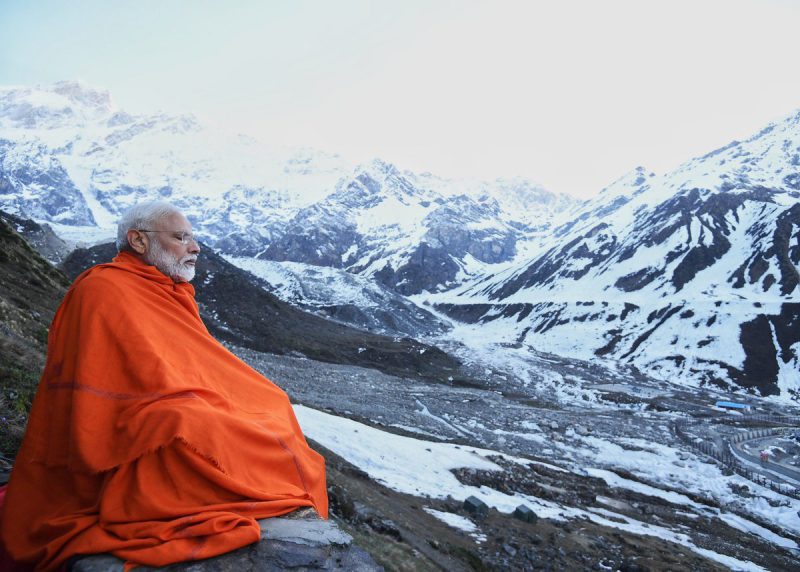After Modi’s election win, what’s next for India in the Indo-Pacific?
Posted By Ian Hall on May 24, 2019 @ 10:30

At the start of 2019, it looked unlikely that Narendra Modi would lead his Bharatiya Janata Party to a win in India’s general election. Economic growth had faltered and promised jobs were not being created. The acche din (‘good days’) he pledged to deliver in 2014 seemed increasingly unlikely.
In the end, however, Modi succeeded, thanks to a well-funded campaign [1], a weak opposition, and his recent handling of national security challenges. The air strikes [2] Modi ordered after terrorist attacks in Kashmir in mid-February, and the anti-satellite missile test [3] in late March—tests he hailed as a step towards making India a ‘space super-power [4]’—both played to the prime minister’s advantage.
Despite this brinksmanship and muscle-flexing, Modi’s win will be met in capitals across the Indo-Pacific with relief. India has been perceived as a more active and arguably more reliable interlocutor under his leadership. Officials across the region will expect more continuity than change in India’s foreign and security policies in Modi’s second term.
This assessment is not unreasonable. Over the next five years, as over the last, it is likely that New Delhi will look to further strengthen its security partnerships with Washington, Tokyo, Singapore, Hanoi and Canberra. It’s likely, too, that the Modi government will try to manage India’s relationship with China much the same as before, oscillating between engagement and pushback when red lines are approached. And it’s likely that New Delhi will keep talking up India’s economic prospects in an effort to drum up inward investment, albeit while dragging its feet on trade liberalisation, including the conclusion of the ASEAN-centred Regional Comprehensive Economic Partnership (RCEP).
Whether Modi can continue along these lines is not, however, completely clear. The international environment has become steadily more challenging since he first came to power. China is far more assertive and more ambitious. Donald Trump is now in the White House, and while Republicans are generally more generous to India than Democrats, the current president is manifestly capricious, and disagreements with Washington loom. New Delhi has extricated itself from at least two major crises with nuclear-armed Pakistan, but not without signs that things could, if the cards fell differently, slip out of control. Last but not least, the relatively positive economic circumstances of the past few years, underpinned by low oil prices, may not last for much longer.
During Modi’s second term, India may find foreign policy far more difficult, as Ashley J. Tellis observes [5]. Chinese pressure will continue to build, as its Belt and Road infrastructure projects roll out through South Asia and the Indian Ocean. Another confrontation on the disputed frontier with the People’s Republic, like the one at Doklam in Bhutan in mid-2017, could well occur, with more threats of ‘pedagogic war [6]’ from Beijing. A serious falling out with Washington—or at least with Trump—over India’s trade surplus with the US [7], purchases of Iranian oil [8] or acquisitions of Russian arms [9] is also possible. If progress is not soon made on RCEP, disillusionment with India’s already-doubted commitment to liberalising trade will grow. And in the background to all of this, there’s the ever-present risk of another major crisis concerning Pakistan.
Meeting these challenges will require concerted effort to build India’s diplomatic capacity and modernise its military. To rely on personal diplomacy and apex summitry, however energetic, as Modi has done to date, will not be enough. His government needs urgently to invest in building institutional capacity—and to lift the defence budget from where it currently languishes [10], at 1.5% of GDP.
It will also require support from India’s friends and partners, including Australia. Despite Trump, much will, of course, come from the US. Having designated India a ‘major defence partner [11]’ in 2016, Washington now treats it as a quasi-ally in terms of sales of military hardware and technology transfer. More recently, the Asia Reassurance Initiative Act [12] made clear congressional backing for the strategic partnership with India, and, indeed, for the Quad [13].
Where Australia might make a difference is elsewhere. Deepening defence cooperation, including more and more complex joint exercises, should be a given. Sharing information about how best to manage the many challenges posed by a changing China—from economic statecraft to political interference—ought to be a priority. Working with New Delhi to help it find a way of accepting RCEP and endorsing trade liberalisation more broadly, as essential to India’s economic development, should be too. And so might exploring ways in which India can contribute more to ensure the independence of the states of Southeast Asia—a key shared interest—and the security of its peoples and commons.
Article printed from The Strategist: https://www.aspistrategist.org.au
URL to article: https://www.aspistrategist.org.au/after-modis-election-win-whats-next-for-india-in-the-indo-pacific/
URLs in this post:
[1] well-funded campaign: https://www.bloomberg.com/graphics/2019-india-election-funds/
[2] air strikes: https://www.aspistrategist.org.au/indias-strike-on-balakot-a-very-precise-miss/
[3] anti-satellite missile test: https://carnegieendowment.org/2019/04/15/india-s-asat-test-incomplete-success-pub-78884
[4] space super-power: https://www.reuters.com/article/us-india-satellite/modi-hails-india-as-military-space-power-after-anti-satellite-missile-test-idUSKCN1R80IA
[5] Ashley J. Tellis observes: https://carnegieendowment.org/2019/05/20/troubles-aplenty-foreign-policy-challenges-for-next-indian-government-pub-79161?utm_source=carnegieemail&utm_medium=email&utm_campaign=announcement&mkt_tok=eyJpIjoiWmpaak56WXdaR1U1TkRnMiIsInQiOiIrVktSK291dkdpSG1BZExwUXk0NDU5SFM1V29iY0JpWUhwbWxMYlpxRzZKQjVcL25jck9zRExMTDVKNzAwN1VqeUlROWk0d0poeGNwZmIxM29oVUszQ3dNQXRpTzBBaGtFU2lDYlhsUXErYWNcL25keDFoOFhDK1dZODBRZm1LclJGIn0%3D
[6] pedagogic war: https://www.scmp.com/comment/insight-opinion/article/2127282/doklam-stand-china-will-india-learn-right-lessons-or-pay
[7] India’s trade surplus with the US: https://www.nytimes.com/2019/03/05/us/politics/trump-us-india-tariffs.html
[8] purchases of Iranian oil: https://www.brookings.edu/blog/order-from-chaos/2019/04/23/trump-tightens-sanctions-on-irans-oil-exports-how-india-will-respond/
[9] acquisitions of Russian arms: https://www.dw.com/en/india-tests-us-sanctions-with-purchase-of-russian-arms-iranian-oil/a-45774933
[10] currently languishes: https://www.orfonline.org/research/why-indias-new-defense-budget-falls-short-48077/
[11] major defence partner: https://www.hindustantimes.com/world-news/us-senate-passes-bill-seeking-enhanced-ties-with-major-defence-partner-india/story-7uaND7m38v7cmR7upZZQgM.html
[12] Asia Reassurance Initiative Act: https://www.congress.gov/bill/115th-congress/senate-bill/2736/text
[13] Quad: https://www.aspistrategist.org.au/quad-supports-us-goal-to-preserve-rules-based-order/
Click here to print.